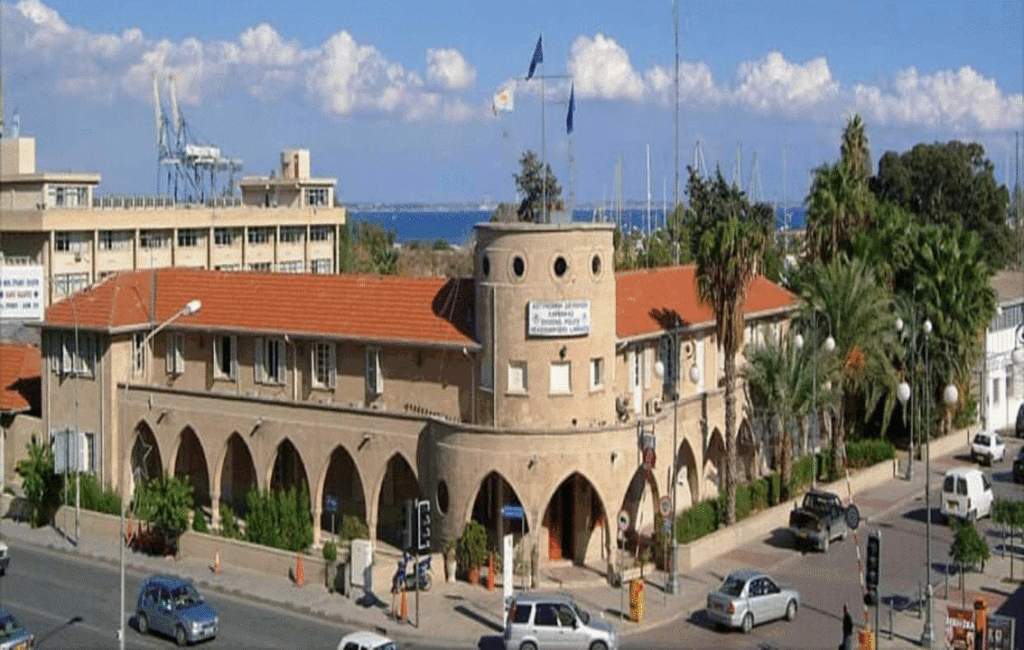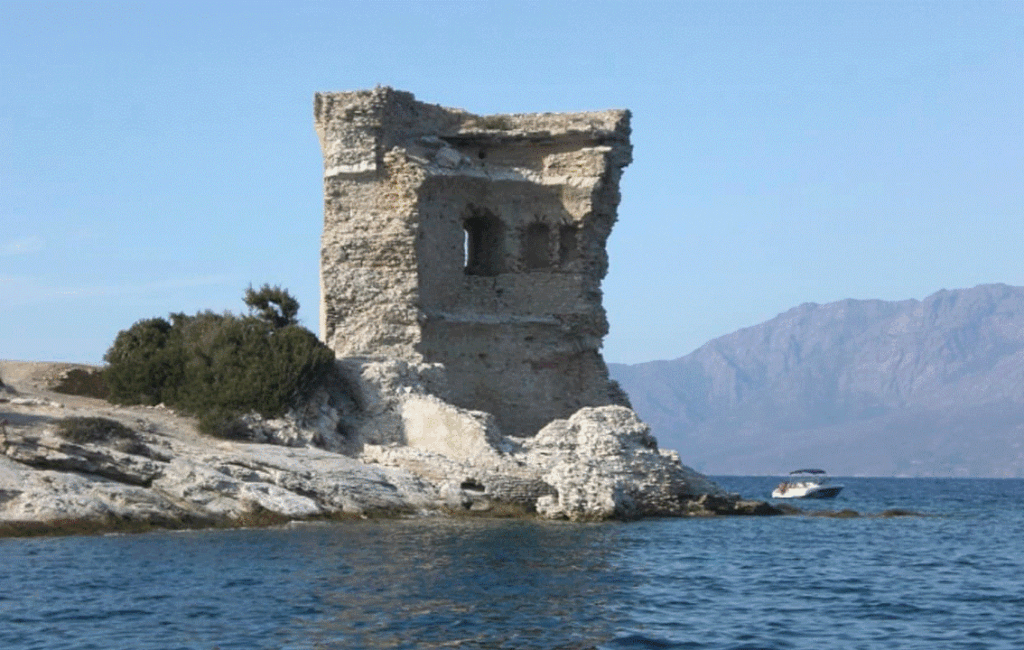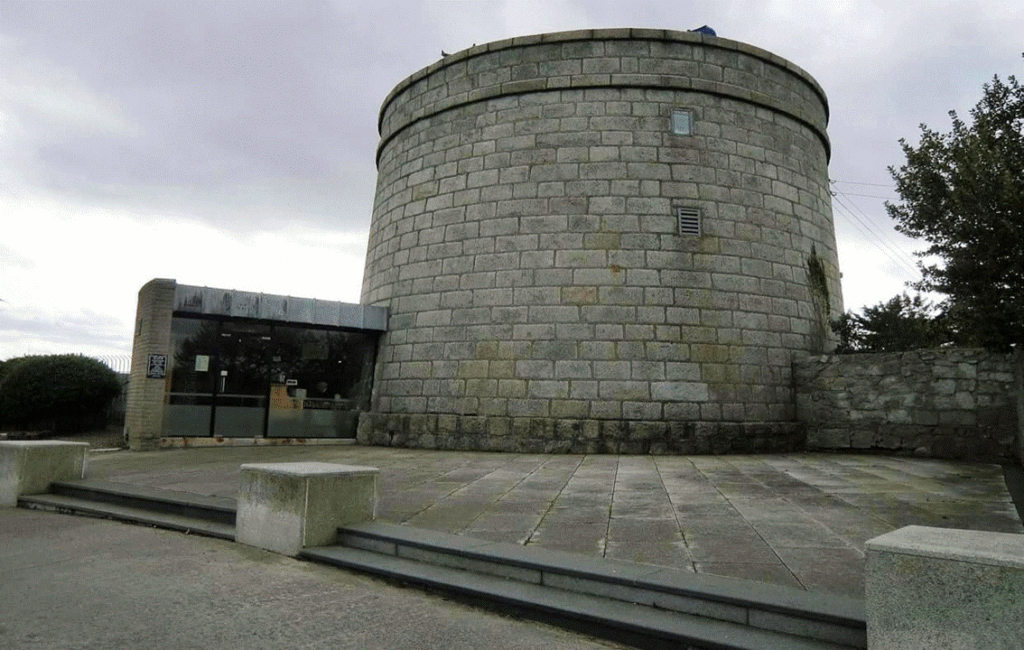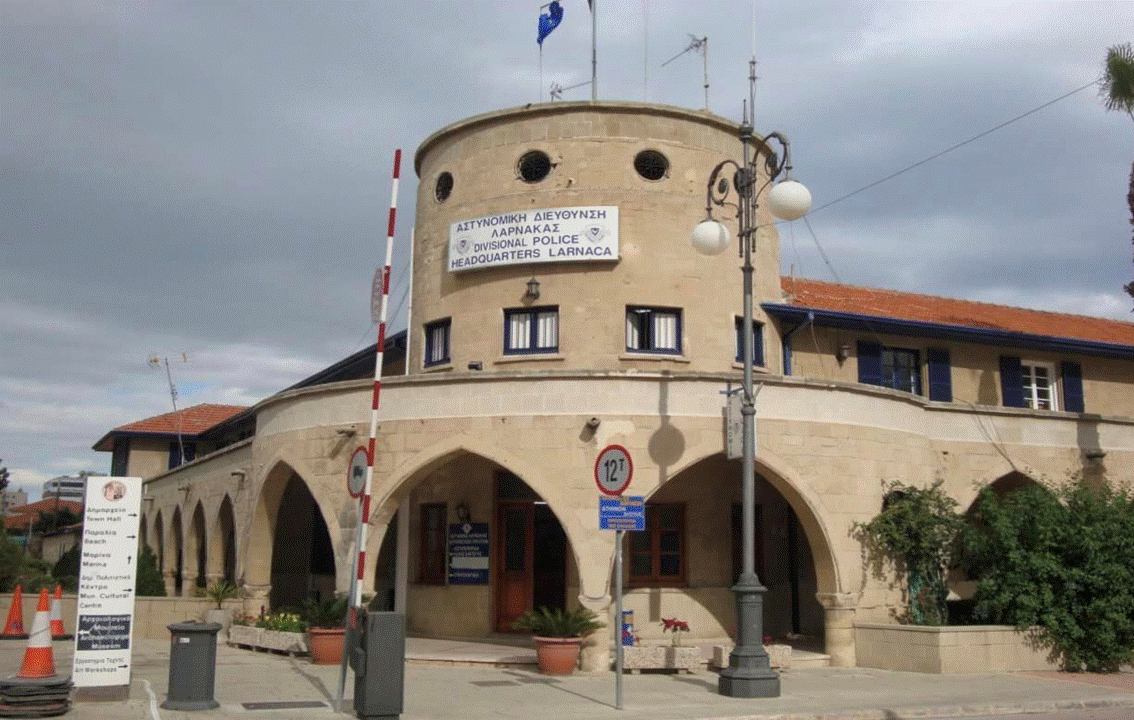A SYMBOL OF IMPERIAL POWER
DESIGNED & BUILT BY BRITISH ADMINISTRATORS
The Larnaca police station and headquarters building is located on the corner of Athens and Archbishop Makarios III Avenue. It greets all visitors entering the eastern side of the city’s Finikoudes seafront promenade. This iconic buiding was designed and then built by the British colonial administration on the island during wartime in 1940.

AN ICONIC BUILDING
The iconic building is characterised by the ‘pointed’ arches of the ground floor and the imposing round tower in the corner that dominates the whole building. Its key location near the port has made it part of the city’s vital infrastructure since its inception and it stands today as one of Larnaca’s most iconic buildings.
ROBIN HALIDAY MACARTNEY
Designed by the British architect, Robin Halliday Macartney, this unique building has two wings that meet at right angles in the middle, and at this meeting point, an imposing tower rises above the building’s roof at the centre.

A SYMBOL OF FORTIFIED FRONTIERS & IMPERIAL POWER
The tower’s appearance and circular plan is an unmistakable reference to an important element of 19th-century British defensive architecture, known as the ‘Martello Tower’. After its construction, the architect stated that the tower, that dominates the building, no longer had any defensive significance by 1940, but he wanted to build a symbol of fortified frontiers and Imperial British Power. Ironically, it remains a rather strange symbol for an independent Cyprus.

THE MARTELLO TOWERS
The Martello Tower took its name from the circular defensive structure at Cape Mortella on the island of Corsica.

THE FRENCH REVOLUTIONARY WARS
The British realised the full potential of the structure during the French Revolutionary Wars, when the Cape Mortella Tower, was besieged by two British warships during the siege of Saint-Florent in 1794.
A STRUCTURE OF DEFENSIVE CAPABILITIES
A fierce battle ensued and although the British eventually captured the Cape Mortella Tower, they had suffered heavy losses and incurred several casualties. The defensive capabilities of the structure were obviousa and the British were so impressed that they decided to use similar structures for their defences and went on to build several of these small defensive structures en-masse all over their colonial empire.

A THREAT OF INVASION
In response to the threat of invasion by Napoleon Bonaparte, who was usuroing much of Europe, in the early 19th century, the British designed and built around 150 of these towers across the British Isles. Each tower was constructed within the sight of a neighbouring tower so that news of any impending invasion could be easily transmitted further down the line, meaning that they were designed for both defence and as an early warning system. British Administrators later went on to build more of these towers throughout the empire, particularly in Australia, Canada, South Africa, Sri Lanka, Mauritius, and Sierra Leone, with rapid tower construction continuing until the 1870’s.
OBSELETE BY THE LATE 19TH CENTURY
After the 1870’s however, with the advent of more modern weaponry, construction dramatically slowed down as the Martello Towers became obsolete.
A TYPICAL TOWER
Martello Towers became the preferred defensive structure during the heyday of the British Empire, and they were usually around 12 metres high and had walls that were at least 2.5 metres thick. The ground floor of each tower was usually used to store munitions and provisions in the absence of a basement and the interior part usually consisted of at least two floors that had fireplaces built into the walls for cooking and heating.

A TYPICAL TOWER
The first floor of these towers, which was divided into several compartments, normally housed a garrison of no more than 24 men, and each one that was so clearly visible symbolised the strengrh of the British Empire and its willingness to defend its borders. The Martello Tower has also been celebrated in literature, and the ‘Dublin Tower’ is famous for being the setting for the first chapter of James Joyce’s novel Ulysses.


